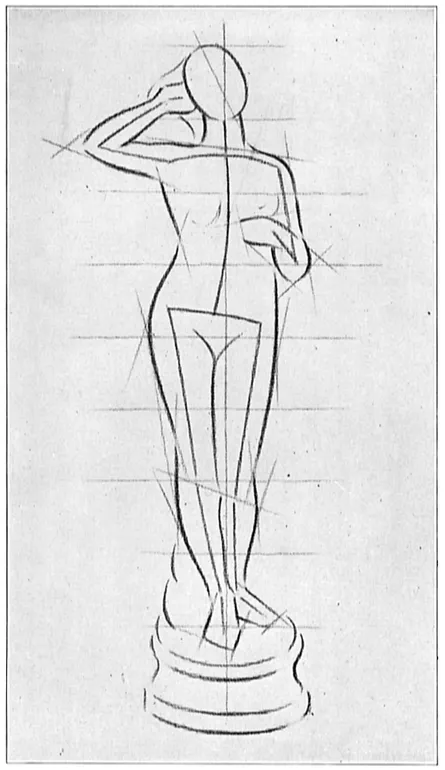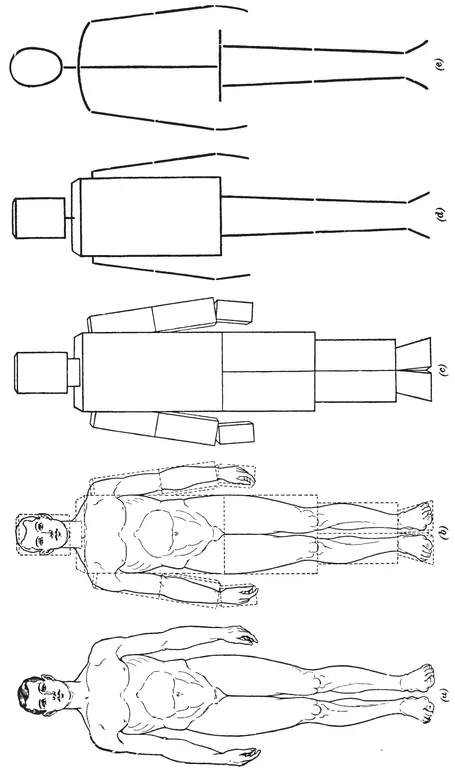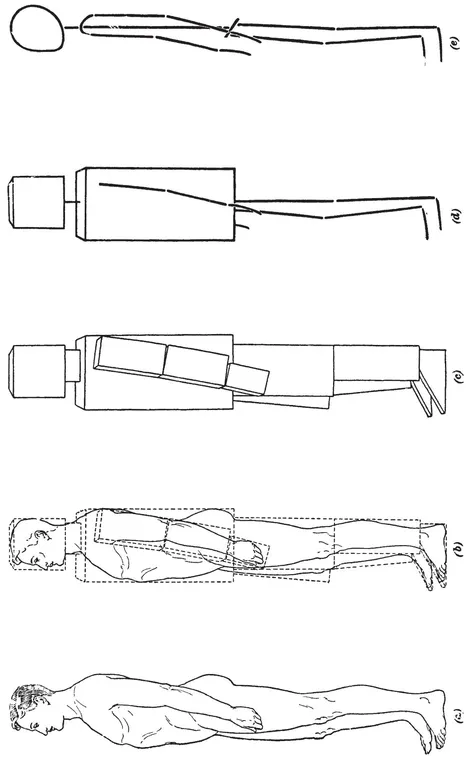
eBook - ePub
Life Drawing
A Complete Course
E. L. Koller
This is a test
Compartir libro
- 224 páginas
- English
- ePUB (apto para móviles)
- Disponible en iOS y Android
eBook - ePub
Life Drawing
A Complete Course
E. L. Koller
Detalles del libro
Vista previa del libro
Índice
Citas
Información del libro
The human figure, with its myriad curves and contours, can be challenging for anyone to draw. In this invaluable reference, well-known art instructor and author E. L. Koller simplifies the process, making it easy for artists to learn new methods of rendering the figure—in action and repose—with accuracy and style.
Using figure-drawing exercises, numerous photos, and illustrations, Koller reduces the task at hand into manageable steps for intermediate and advanced artists. Beginning with drawing basics, this step-by-step guide explores the structure of the human figure and the comparative proportions of child and adult figures, showing how to depict individual parts of the head and body, facial expressions, and gestures. It also shows the merits of sketching from memory; drawing from casts, photographs, and living models; and sketching both undraped and costumed figures. Once the still figure is mastered, the artist can explore the more challenging action poses, including walking, running, and catching. Filled with guidance and insight on the human form, Life Drawing is an essential addition to every artist's reference shelf.
Using figure-drawing exercises, numerous photos, and illustrations, Koller reduces the task at hand into manageable steps for intermediate and advanced artists. Beginning with drawing basics, this step-by-step guide explores the structure of the human figure and the comparative proportions of child and adult figures, showing how to depict individual parts of the head and body, facial expressions, and gestures. It also shows the merits of sketching from memory; drawing from casts, photographs, and living models; and sketching both undraped and costumed figures. Once the still figure is mastered, the artist can explore the more challenging action poses, including walking, running, and catching. Filled with guidance and insight on the human form, Life Drawing is an essential addition to every artist's reference shelf.
Preguntas frecuentes
¿Cómo cancelo mi suscripción?
¿Cómo descargo los libros?
Por el momento, todos nuestros libros ePub adaptables a dispositivos móviles se pueden descargar a través de la aplicación. La mayor parte de nuestros PDF también se puede descargar y ya estamos trabajando para que el resto también sea descargable. Obtén más información aquí.
¿En qué se diferencian los planes de precios?
Ambos planes te permiten acceder por completo a la biblioteca y a todas las funciones de Perlego. Las únicas diferencias son el precio y el período de suscripción: con el plan anual ahorrarás en torno a un 30 % en comparación con 12 meses de un plan mensual.
¿Qué es Perlego?
Somos un servicio de suscripción de libros de texto en línea que te permite acceder a toda una biblioteca en línea por menos de lo que cuesta un libro al mes. Con más de un millón de libros sobre más de 1000 categorías, ¡tenemos todo lo que necesitas! Obtén más información aquí.
¿Perlego ofrece la función de texto a voz?
Busca el símbolo de lectura en voz alta en tu próximo libro para ver si puedes escucharlo. La herramienta de lectura en voz alta lee el texto en voz alta por ti, resaltando el texto a medida que se lee. Puedes pausarla, acelerarla y ralentizarla. Obtén más información aquí.
¿Es Life Drawing un PDF/ePUB en línea?
Sí, puedes acceder a Life Drawing de E. L. Koller en formato PDF o ePUB, así como a otros libros populares de Art y Art Techniques. Tenemos más de un millón de libros disponibles en nuestro catálogo para que explores.
Información
Categoría
ArtCategoría
Art TechniquesTHE HUMAN FIGURE

Method of Blocking in, and Proportioning, the Idealized Classic Figure Eight Heads High. The Living Model of the Female Figure is Considered as Only Seven Heads High.
PLACE OF HUMAN FIGURES IN ILLUSTRATING
1. Four Stages in Learning to Draw.—The use of the human figure usually occupies a prominent part in the composition and drawing of pictorial and decorative work. But the human figure is extremely difficult to draw, being composed of so many subtle curves and contours, and such delicate gradations of light and shade in its modeling, that, before these can be drawn and rendered properly, training must be had in drawing more simple forms. For that reason training has been given in line drawing and eye measurement, in model drawing in outline, and in drawing from inanimate models to portray light, shade, and shadow, this preliminary training serving as a series of graded steps leading up to the drawing of the human figure. The next natural and logical step is to draw the human figure, which may be considered the fourth stage in learning to draw.
2. Proper Foundation for Figure Drawing.—Before one can draw the human figure he must be thoroughly familiar with the proportions, measurements, and contours of the human figure as a whole, and of each of its individual parts. To give such a familiarity is the purpose of this subject, which may be considered as a sort of reference book. The information given here must be thoroughly understood, and practice secured in actually sketching such proportions, before the practical work of drawing human figures in various postures and actions can be taken up. In the following subjects the training in figure drawing is extended to include drawing the figure in repose and in action.
Owing to the demand, by a certain class of art students, for a short-cut method of drawing the human figure, unprincipled persons posing as instructors have denied the necessity of a well-laid foundation for drawing the human figure. Their so-called short cuts for teaching the drawing of this, the most complicated of all subjects, however, do not train one to do original work in actually drawing from the living model. They teach only facility in copying the work of others, an accomplishment that is of no practical value to the prospective illustrator.
3. Foundation for Caricaturing and Cartooning.—A careful systematic study of the human figure is absolutely necessary for any one who desires to draw caricatures and cartoons. Many persons, because of the attraction of the pictures in the comic sections of newspapers and in humorous weekly and monthly magazines, acquire a strong desire to do work of this kind. They, therefore, often study the work of their favorite cartoonists thinking that when able to copy this work satisfactorily their training is done. These persons confuse the ability to copy with the ability to originate.
It is impossible to compose and draw cartoons, caricatures, or original pictures of any kind, unless one has had a thorough graded training in drawing, and no one can draw the human figure without a full knowledge of the rules governing its proportions, etc. Caricatures are but drawings of a face or figure with its features exaggerated and cannot be drawn, except from a copy, until the ability to draw the face or figure in its normal proportions has been obtained. This ability is acquired only by a systematic study of figure drawing, facial expression, etc., such as will be given in this and following Sections.
The student is strongly advised against the practice of copying caricatures and cartoons made by professional artists, or making comic drawings in imitation of some cartoonist’s individual style. Such a practice will be of absolutely no value in training him to draw the human figure, or in acquiring an individual style.
PROPORTIONS OF HUMAN FIGURE
FRAMEWORK OF FIGURE
4. Application of Principle of Structural Forms. The transition from drawing inanimate models in outline and light and shade to drawing the human figure is not, in reality, an abrupt one. As the curved line is based on the straight line and can be drawn more easily and accurately if straight construction lines are drawn, and as solids with curved sides and edges are based on solids with straight sides and edges, so may the human figure and its individual parts be based on rectilinear shapes of given proportions. This is well shown in Figs. 1 and 2, which give the full-front and side views of the same figure. In each case, (a) shows the fully modeled figures; (b) shows the figure and all its parts enclosed within their proper frameworks; (c) shows the frameworks alone.
5. From these two illustrations it is evident that certain principles govern the drawing of the human figure. These principles must be clearly understood and kept in mind at all times; they are as follows:
1. The human figure is a solid, for it has length, width, and thickness; it is not, however, a hard, rigid, unbending solid like a piece of wood or marble.
2. Each individual part, such as the head, the trunk, the arm, etc., is also a solid.
3. The head may be enclosed within an imaginary block form slightly longer than a cube; the neck within a half cube the trunk, from the neck to where the legs join the body, within a solid about twice as high as wide but not quite as thick, or deep, as it is wide; the legs and arms within hinged pairs of solids, each section of the pair (corresponding to upper arm or upper leg and lower arm or lower leg) being about twice as long as wide; and the feet within wedge-shaped blocks as shown.


4. These blocks or solids are not fastened rigidly together at their points of joining, but may be considered as being hinged so as to be able to move in various directions.
If these few general blocking-in shapes are fixed well in mind it will always be possible to think of the figure, no matter how placed or in what complicated postures, as being made up of flexible solids, properly joined, and of the proportions given. The purpose, therefore, of these illustrations is not to furnish a quick method of drawing the figure, but to show the basic framework of the figure and its parts, considered from the exterior.
6. Foreshortening of Human Figure.—As people do not always stand erect, soldier like, but assume postures in which one part of the body is much closer to the observer than other parts, the principles of foreshortening must often be applied to drawings of the human figure. The application of these principles, however, is not difficult when the body is thought of as being enclosed within flexible rectilinear solids. Whenever it is desired to show the figure in a...